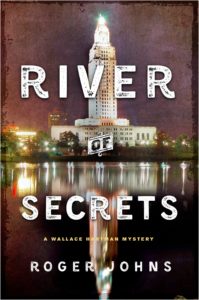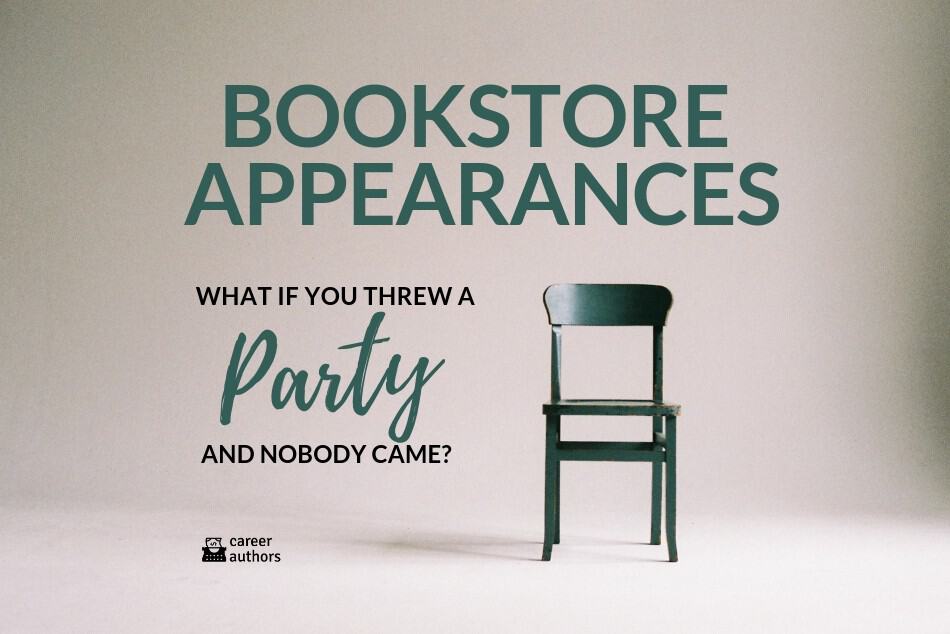by Roger Johns
Since my first book came out at the end of August 2017, I’ve made 37 bookstore appearances all around the country. And while, for the most part, things turned out just fine, not everything went smoothly.
Every once in a while, few (or zero) people show up for an event. I’ve been through this as an author and I’ve seen it happen to others—some who are just starting out, as well as some who are very well-known. If you spend any serious amount of time touring to promote your work, chances are it’s going to happen to you too. There are, however, constructive ways to deal with this when it happens.
Book talks and book signings are two of the most common forms of bookstore events. The dynamics of each are a bit different, so dealing with them requires recognizing these differences.
Book Talks
A book talk is an author addressing an assembled group about a book (and anything else the audience is interested in), followed by a signing. Occasionally, despite the best of intentions and a ton of promotion, attendance turns out to be low or nonexistent.
Making the Best of a Low Turn-out
- Rearrange the Furniture: The physical space at book talks is usually laid out with rows of audience chairs facing a chair or podium for the author. As the start time approaches, if it’s clear the headcount will be low, reduce the space between you and those in attendance so that the gathering feels more intimate. If possible, reduce the chair count, as well, so it more closely matches the attendance level. I once watched in admiration as a well-regarded author announced that because attendance was lower than expected, we would gather around in a tight circle and have a discussion instead of the originally-planned presentation. She then dragged a few chairs out of the lecture-style setup into a discussion-group setup.
- If You’re the Author, Interview the Audience: At that same event, once we three audience members were seated, the author started interviewing us about our personal experiences and how they might relate to the subject of her book.
- If You’re in the Audience: Interview the Author: If you’re attending a low-turnout event, use it a learning opportunity. You’ll definitely learn something and probably make a friend. I remember being at such a book talk for a fairly well-known author. When the audience didn’t materialize, I asked question after question about career management and on-the-road promotion. Some parts of the originally intended book talk made their way into the discussion, but it was mainly a chance for the author to tell some very interesting, very useful stories about the ups and downs of life as a contemporary author.
- Bookstore owners/managers typically invest a fair amount of time and effort and money into putting together a book talk, so a poor turnout will feel as bad for them as it does for you. Be gracious and thankful in these situations, because selling books is one of your priorities, but cultivating relationships is also a priority. Make every effort to cement this relationship. Chat with the owners and their staff about the store, their clientele, and their experiences as booksellers.
Reducing the Likelihood of a Low-Turnout
- If you’re not a well-known author, one of the best insurance policies against a low turnout is a multi-author event. If you’re not from the area where the bookstore is located, try to include some local authors. Bookstores tend to favor this approach, but it’s not a perfect solution. Multiple authors require greater schedule coordination and greater inventory acquisition cost. You can minimize these by offering to coordinate the schedules of the authors involved, and by offering to bring your own books. More authors at an event also means fewer average books sold per author. But, building a readership requires patience, so remember that sales during an event might understate the long-run growth of your readership because a positive in-store engagement with readers can lead to later sales.
- Book talks are long lead-time events. Stores need time to fit you into the calendar, develop and implement a promotion campaign, and acquire copies of your books. As soon as you know your publication date, start contacting stores to find out their lead-time and act accordingly.
Book Signings
A straight-up book signing is just an author at a table, with a stack of books, hand-selling to customers as they come into the store. Unlike a book talk, which has a prearranged start and stop time, signings often have only a pre-arranged start time. Because the store is essentially getting a free employee devoted to selling a particular part of the inventory, store owners/managers will often allow authors to stay as long as they want.
Making the Best of a Low Turn-out
Because you will be at the mercy of the store’s walk-in traffic, it may take longer to determine how well things are going. But remember, building a readership requires patience, so if the store ends up having a slow day, take the long view and use the time wisely.
- Develop a rapport with the staff. They and your books will be there long after you’re gone. Thousands of books by other authors will also be there, so give the staff a reason to recommend yours when customers ask.
- Provide information the booksellers can use to hand sell your books in the days and weeks following your signing:
- The story line
- Comparable titles
- Comparable authors/styles
- The type of reader it will appeal to
- Its appeal as a book club selection
- A list of favorable reviews and blurbs, and any awards or recognitions the book has received
I actually keep nicely printed pages with all of this information, and I leave copies with store staff.
- Use low-traffic periods as low-pressure opportunities to hone your customer engagement skills and your elevator pitch:
- Not everyone feels comfortable approaching an author on their own initiative. Learn to recognize this and develop techniques for greeting incoming customers and talking them over to your table for a chat.
- Pay attention to what works and what doesn’t. If a customer asks what my books are about, but aimlessly flips the pages as I deliver my pitch, I’ve learned that’s a signal to take a different slant. You’ll need a repertoire, not a one-line-fits-all approach.
- Offer to sign stock and then promote the presence of those signed copies in your follow-up posts on social media. Make sure your post includes smiling pictures of you and the store staff.
Reducing the Likelihood of a Low-Turnout
- Be aware of the calendar. Store traffic depends on a number of factors, such as the time of day, the day of the week, the season, the weather, and competing events, such as elections, sporting events, holiday parades, the start of summer vacation or spring break, and local festivals. So, consider these when you ask for an in-store date, and ask the store events coordinator for the best day/time to schedule an event.
- Call the chamber of commerce to find out if there are any merchant/shopper-oriented days that bring more foot traffic into the area of town where the store is located, and try to schedule for one of these days.
Above all, and in every instance, regardless of the format or the turnout of your bookstore appearances, be thankful to those who invested their resources in your event, let them know that you enjoyed every minute of your time with them, keep a positive attitude throughout, offer to be helpful and, did I mention . . . be thankful to your hosts.
Have stories or advice of your own to share? Join us on Facebook.
 ROGER JOHNS
ROGER JOHNS is a former corporate lawyer and retired college professor, and the author of the Wallace Hartman Mysteries from St. Martin’s Press/Minotaur Books: Dark River Rising (2017) and River of Secrets (2018). He is the 2018 Georgia Author of the Year (Detective-Mystery Category), a 2018 Killer Nashville Readers’ Choice Award nominee, and a finalist for the 2018 Silver Falchion Award for best police procedural. Along with four other crime fiction writers, he co-authors the MurderBooks blog.
is a former corporate lawyer and retired college professor, and the author of the Wallace Hartman Mysteries from St. Martin’s Press/Minotaur Books: Dark River Rising (2017) and River of Secrets (2018). He is the 2018 Georgia Author of the Year (Detective-Mystery Category), a 2018 Killer Nashville Readers’ Choice Award nominee, and a finalist for the 2018 Silver Falchion Award for best police procedural. Along with four other crime fiction writers, he co-authors the MurderBooks blog.





